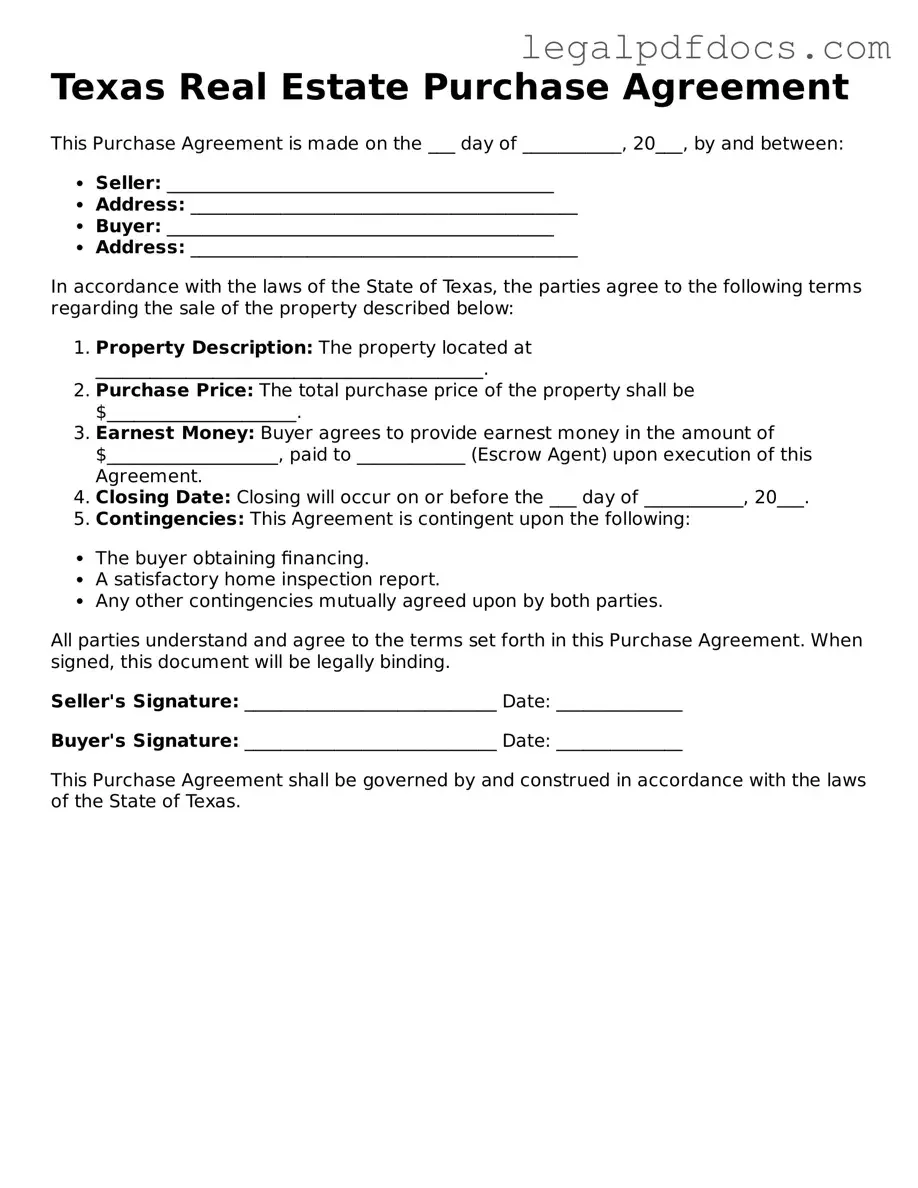Official Real Estate Purchase Agreement Form for Texas
The Texas Real Estate Purchase Agreement is a legally binding document that outlines the terms and conditions under which a property is bought and sold in Texas. This form serves as a crucial tool for both buyers and sellers, ensuring that all parties are clear on their rights and obligations throughout the transaction process. To get started on your real estate journey, fill out the form by clicking the button below.
Open Real Estate Purchase Agreement Editor Here
